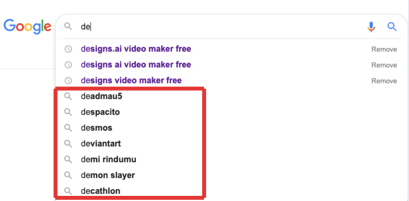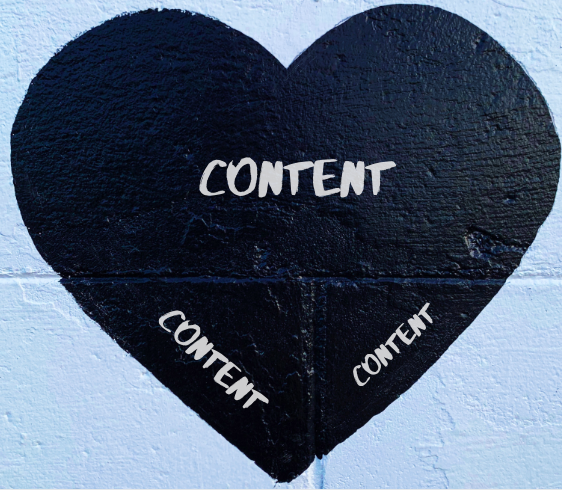
Are you hitting a brick wall when it comes to generating new ideas? Well, you’re not alone as running dry is a dilemma for many content creators. Maybe you’re uninspired or maybe you’ve run out of topics to create content from. Whatever the reason may be, fret no more as we’ve compiled this guide on how to never run out of ideas.
Why You Need To Know How To Generate Content Ideas
Before we dive into the specifics, the first question to answer would be if you and your team have a standardized process to generate ideas for content creation. If the answer is no, that would be the main reason why one runs out of ideas in the first place. Ideas may seem like a naturally-occurring-sparks-of-inspiration but when your job depends on it, spontaneity is no longer a good fit.

Here are the 4 main reasons why every content marketer needs to know how to generate content ideas:
1. Road to create high-quality content
As a content creator, your goal is to create top-notch content, one that justifies the time and effort you’ve put in to create them. The truth is, you won’t be generating these ideas if no intentions to do so is in place. As content creators, our days are busy. From podcasts, websites and even social media, we are constantly required to be present and execute ideas for various platforms. That said, having a process on how to generate content ideas will save you from future headaches and hassle.
2. Two heads are better than one
With a content generation process in place, you can now involve others in your team to contribute any ideas they may have in mind. They may have ideas you wouldn’t have thought of on your own. So, dedicating time to sit your team down and also build on their ideas they have will add some vibrancy to your content plans.
3. Content fatigue: The inevitable writer’s block
Yeap, that’s right. As inexhaustive or inspired you may perceive yourself to be, you’re a human after all. There will come a point where no matter how much you try to generate ideas, your canvas remains empty and as a professional writer you can’t afford to wait around for ideas to fall on your lap. Your job will require consistent content generation and you can meet that expectation with a content generation process in place.
4. Key to scale-up
All efforts for content creation are to ultimately conduct marketing ‘at scale’, enabling wider reach and greater impact. To do so, a proven, systematic process is necessary. This is to ensure that even if one of your team member leaves, your team could still successfully generate content. Think of content marketing as a production factory and the content as the product. When your top content creator leaves, work must go on and it can only be done with a content generation process in place.
Now that we’ve covered 4 reasons why you should have a content generation process in place, let’s talk about:
A) The Breakdown of Idea Generation Process
In this section, we bring you through a gradual process of how ideas are formed, synthesized and pieced together to make a complete puzzle.
Step 1: Ingestion of raw materials

Raw materials are the main source of content creation ideas and this requires you (content creator) to be hungry by consuming as much content as possible yourself. It is vital that creators are open to consuming all kinds of content, even ones that are irrelevant to your field. This is simply to open the possibility that ideas linger on every nook and cranny and only through unbiased consumption one may come across these ideas. Sources? Anything and everything. Youtube videos, blogs, social media posts, newspapers, magazines, books, and even images. Mere consumption is insufficient, make sure you have a respiratory to store all and any ideas drawn. Jot them down on a book or store them in an Evernote notebook, whichever medium floats your boat, sail it.
Step 2: Digestion of content

Now that you’ve absorbed materials, it’s time for you to allow these materials to flow. The goal of this stage is to allow all disparate pieces of ideas to come together and eventually form into a whole idea concept that makes sense and be expanded. In this stage, you will be looking for combinations, building connections and drawing relationships. Synthesization of all these different pieces will allow you to birth a content that’s truly meaningful and compelling compared to when one just absorbs one particular content and goes on to create another without further reference. Your audience will be able to recognize content that’s created with a lot of intention and effort. Your duty is to show that a lot of thought had gone behind the content created by actually putting in high level of consideration and intention.
Stage 3: Do nothing.
Remember, as much as we’re trying to formulate and standardize idea generation, it is still a creative process. To a certain extent, spontaneity is still important. Listen to music, draw, dance or even take a nap. This stage is about allowing your mind’s subconscious to piece information and allowing your mind to naturally process them without force. Leverage the mind’s ability to churn information at its own pace.
Stage 4: Eureka!
The eureka moment is a transitionary stage that takes place while doing activities completely unrelated to the content you're creating. Additional inspiration and ideas are formed that will help fluff up the content in hand. Again at this stage, you need to write them down. Everyone has ideas, but less jot them down and consequentially even less remember the ideas they get!
B) How To Generate Ideas: Guide On How To Get Ideas Flowing
Here we have listed various approaches you can take to generate ideas and ensure you never run out! Our tip is to implement each approach on a rotation basis to add variation and diversity in your content type.
Method #1: Buyer Persona’s Reading Habit
Our content creation efforts are to satisfy buyer persona’s cravings, it is them so many hours of content creation is invested for. So our first method is to look for content that your prospects want to see and this can be identified by looking into their reading habits. This method will require you to identify what conflicts your prospects are hoping to solve, what sites and blogs do they visit the most and which area of interest they’re drawn to. You can simply ask your customers to gain insights or use tools like BuzzSumo to figure it out yourself. From all the information collected, you can develop and create content your prospects and customers will be happy to engage with.
Method #2: Competitors As Muse
That’s right - we said it, if you have envisioned a spiteful relationship with your competitors, it’s time to change your mindset. It’s very likely that both you and your competitors share the same target audience. Therefore, it’s time for you to look into which content is performing well and why are people engaging with them. The next step is not to mimic their initiatives but rather offer a better, more attractive content as an alternative. Always keep an eye on your competition to stay updated on their content initiatives. This helps you to always be a step ahead in your industry.
Method #3: Q&A Websites

There are also many questions and answer websites that you can refer to as a source of content. Look for questions relevant to your field and collect data on what types of information are these platform users looking for. You could then leverage these questions and use them as a content for you to build upon. Question and answer websites that are commonly used now are Quora and even Yahoo! Answers. You can even look into Lowyat Forum for a more hyperlocalized content.
Method #4: Search Engine Optimization Efforts
There are many sources of ideas you can utilize to generate ideas so in this section will look into each available option in depth.
-
Google Search Console

There are many tools you could use but our personal favourite is the Google Search Console. It provides intel on queries typed by visitors to find your website and the topics you're ranking in the search engine.
-
Autocomplete Functionality

Autocomplete function refers to the search predictions a search engine provides upon typing a particular word into the search box. This will help you expand your content with relevant topics and still be able to provide content that people are actually looking for.
-
Related searches

This feature appears at the bottom of the search result page. You can refer to related searches to ensure that the content you intend to publish covers these relevant searches as well. This helps you produce more informative and substantial content.
- People also search for

This feature specifically appears when a user organically conducts a search, then click on a result and goes back to the search results page. Very much like related search, use this feature to make your content more comprehensive and informative.
Method #5: Company brainstorm
While method one to four are methods you can get done on your own, method 5 will require you to get others on board. For company brainstorm, sit your coworkers or team members and choose a person to moderate. Set a clear agenda in a comfortable environment. If your team has yet to warm up with one another, an ice breaker would be necessary. To get creativity flowing, initiate a basic word association game. Once everyone is warmed up, initiate a brain dump session that requires everyone to write down their ideas regarding a particular topic. From here on forth, you can conduct an idea generation process and start building your content.
Wrapping Up

Ideas are at the heart of every content created. It is important to place more intention and calculated efforts for idea generation process. This ensures the production of high-quality content. Don’t create content for the sake of just creating but identify what and how said-content will add value to prospects or customers and in return, also add value to your business.




